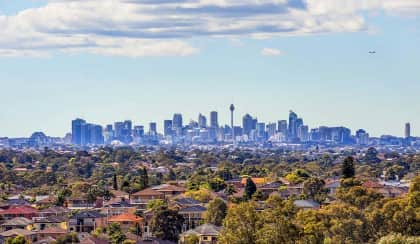Quarterly home value increases hint at cautious market recovery
For the first time in a year, Australian home prices recorded an increase over the first quarter of the year, with Domain reporting the market’s showing signs of rebounding.

Following price declines categorising the back half of 2022, the research firm’s House Price Report found house prices in Sydney, Adelaide, and Perth jumped 1.3 per cent, 1.2 per cent, and 0.4 per cent, respectively in the opening quarter of 2023, as values in the combined capitals climbed 0.4 per cent.
Brisbane and Melbourne experienced price stabilisation, while values in Darwin, Hobart, and Canberra fell 3.1 per cent, 2.9 per cent, and 2.5 per cent, respectively.
Dr Nicola Powell, Domain’s chief of research and economics, explained, “Australia’s housing market has now fully reverted back to a multi-speed market, meaning different markets are growing at different rates as they were pre-pandemic.”
Such conditions provide buyers and sellers with opportunities in different locations across the country. She noted that “the shift is being led by our larger capital cities which normally lead the property market given historically, they hit a peak price earlier and fall faster.
At just under $1.4 million, Sydney remains the most expensive capital city housing market, while Canberra and Melbourne both boasted $1 million median house prices. On the flip side, Darwin is the cheapest market given its median price of $623,600.
On the unit front, the NSW capital was again recorded as the most expensive market with an average price of $758,664, while the Northern Territory capital was the cheapest market.
Domain found the unseasonably weak flow of new listings entering the market since last spring has underpinned current price trends, with total home sales dropping 15 per cent below the five-year average for the combined capitals as sellers retreated from the market at greater rates than buyers.
Despite the Reserve Bank of Australia (RBA) voting to hold the cash rate at 3.60 per cent at its April board meeting, interest rates remaining at 11-year highs continue to significantly dent borrowing capacity and escalating cost of debt.
“As prices lift in certain areas, it’s a timely reminder that interest rates are not the only factor influencing housing activity and prices,” she said.
“Population growth is rebounding faster than anticipated, with record levels of overseas migration playing a driving role in our housing markets. Extremely tight rental markets are also making purchasing more attractive and may shift some to buy, given the current challenges of securing a lease,” Dr Powell added.
Even with the Real Estate Institute of Australia (REIA) calling for a continued interest rate pause, the threat of additional rises remains even as inflation reduction is occurring quicker than expected. However, Dr Powell noted, “This could have a positive sentiment flow on to consumers and the push needed for buyers and sellers to return to the housing market.”
She explained that buyers have begun adjusting to the current climate of higher costs of debt, and with the cash rate peak imminent, she said these new conditions “will provide them with a better understanding of borrowing capacity.”
